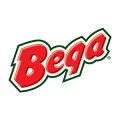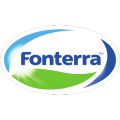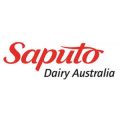Project Outcomes 2021-22
Manufacturing Water Management (2021-22)

Project outcomes
Select the following heading to read more about the Project Brief
Description of the project:
Bega’s Koroit Dairy is a large milk powder manufacturing facility located near Warrnambool in the south west of Victoria.
Production of high-quality dairy powders is resource intensive with high demands on energy and water use, and the accumulation of liquid waste.
The Koroit team wish to better understand their water use, and subsequent wastewater reduction opportunities.
Use of water on site in milk concentration unit operations, milk powder production and high-value functional powders such as lactoferrin.
Collect data on water use; during production and cleaning (CIP: Clean In Place).
Establish where the water goes around the facility and account for all the water in, and water out (as waste) from site. Profile solids lost to waste in each unit operation including milk/water interfaces and cleaning times. Model water flows highlighting key features of water consumption on site.
Controlling Sediment in Farm Milk (2021-22)
Hosted by Burra Foods

Project outcomes
Select the following heading to read more about the Project Brief
Description of the project:
Sediment is a term used to describe heavy contaminants in milk. In milk direct from farm, sediment is usually an indication of how clean teats are and whether there is appropriate filtration on farm. Sediment can include particles of dust, dirt, manure, skin, hay and even feed. Whilst most sediment is fine particles, gross sediment can include grass seeds or dirt particles. By nature, sediment can contain bacteria and flavour compounds which could cause spoilage in milk or if not removed as part of milk processing, provide visual contamination through settling in clear milk bottles.
Dairy farmers will typically wash teats prior to applying cups which will remove gross particulates and have filtration systems on their vats. This should ensure no gross sediment contaminated the milk when it is collected from farm for processing. Based on farmer practices, seasonal conditions and equipment capability, sediment can get through the system and end up in collected milk when delivered to a factory for processing.
In most instances, milk can be separated as part of processing which will remove sediment from finished product. In some instances, milk is not separated in order to retain the integrity of the milk and it is processed directly. In these cases, sediment can cause downstream quality issues in finished product.
This project is to audit, assess and identify best practice sediment control on farm and determine the steps required to bring all up to best practice. If time permits, the identification of engineering controls to remove sediment at our processing facility without separation.
The Origin and Control of Iodine in Bovine Milk (2021-22)
Hosted by Burra Foods

Project outcomes
Select the following heading to read more about the Project Brief
Description of the project:
Iodine is a trace mineral that is present naturally in many foodstuffs and is essential for normal thyroid function in humans. It is often added to salt as a preventative of iodine deficiency. Iodine can be found in bovine milk and concentration levels vary widely based on seasonality, feed and animal treatments used on farm by dairy farmers.
Variations in iodine levels between farms and seasons is problematic in the manufacture of nutritional powders such as infant formula. With very tight nutritional specifications to achieve in finished product, too little iodine can be compensated for by the addition of iodine as an ingredient, however too much iodine will result in out of specification product. This can be very costly as out of specification product can not be used for its manufactured purpose.
This project will require the development of an iodine mass balance tool using available literature, audits of animal treatments, feed, farming systems and genetics with some limited validation testing to generate an iodine prediction model. The intention of the model is to minimise the production of out of specification nutritional powders.
Integrated Work Systems: Lean Manufacturing principles with a focus on efficiency at Darnum (2021-22)
Hosted by Fonterra

Project outcomes
Select the following heading to read more about the Project Brief
Description of the project:
Fonterra manufacturing sites across NZ & Australia operate under a lean manufacturing framework known as Integrated Work System (IWS) which is focused on improving manufacturing reliability, reducing costs and elevating productivity. Under this system there are 11 pillars with Autonomous Maintenance (AM) being a key pillar that drives loss improvement and gets site to base condition. IWS also looks at getting to zero loss. Multiple pillars are used to fulfil this aspiration. Focus Improvement (FI) pillar is used to complete minor projects that focus on waste elimination.
Fonterra is seeking a team of students to help run several projects using IWS tools as well as learn about general data gathering, trending and analysis in a manufacturing environment.
Examples of projects that the students will be involved with include the following:
1. Dryer Plant CIP efficiency and mapping. This project will look at all aspects of Dryer plant cleaning to determine effectiveness as well as map all hard to reach spots to determine both access requirements as well as Preventative Maintenance needs.
2. Site Resource Recovery. The use of materials and packaging in dairy manufacturing is focused on meeting food safety quality requirements but more innovation can be applied to reduce waste.
Integrated Work Systems: Lean Manufacturing principles with a focus on resource efficiency at Stanhope (2021-22)
Hosted by Fonterra

Project outcomes
Select the following heading to read more about the Project Brief
Description of the project:
Fonterra manufacturing sites across NZ & Australia operate under a lean manufacturing framework known as Integrated Work System (IWS) which is focused on improving manufacturing reliability, reducing costs and elevating productivity. Under this system there are 11 pillars with Work Process Improvement (WPI) being a key pillar that drives improvement in how work processes are performed.
Fonterra is seeking a team of students to help lead a number of WPI projects requiring full immersion into the manufacturing environment, data gathering, trending and analysis. The projects will be based at the Stanhope factory site 2.5 hours north of Melbourne and will be scheduled in/around this season’s manufacturing schedules. For this reason, much of the work is not continuous so the team will get involved with 3 diverse work streams as follows:
1. Cheddar Plant CIP efficiency. This project will look at all aspects of cheese plant cleaning.
2. SAPAC Batch Code change over. The packing process in Powder plant requires several checks and changes.
3. Site Resource Recovery. The use of materials and packaging in dairy manufacturing can generate waste but must ensure food safety quality is maintained.
Critical Equipment Reliability Tool (2021-22)
Hosted by Saputo

Project outcomes
Select the following heading to read more about the Project Brief
Description of the project:
The SDA Allansford site has grown in both size and complexity over more than 130 years of operation. The site takes in approximately 1 billion litres of milk annually, producing a wide range of dairy products including cheese, butter, milk powder, whey powder and liquid milk.
On such a complex manufacturing site, plant and process reliability is crucial for efficient operations. Additionally, equipment reliability is also an important component of the food safety in our plant, especially with the valves that are critical components of process lines and equipment. Inspection and maintenance of these valves must be carried out during annual production shutdown periods and is prioritised based on equipment criticality and our internal knowledge & experience of the plant. Capturing this knowledge & experience and imbedding it in an interactive decision matrix will help to build better reliability programs on site.
The student team will be required to develop a detailed understanding of the production processes and critical valving equipment in a key production area on site. The team will build their knowledge of the equipment from hands-on work in the production plant as well as consultation with experienced maintenance personnel, equipment suppliers and operators.
Using this knowledge, the team will develop and pilot an interactive app-based tool that captures the understanding of each piece of equipment and the process environment it is operating in and uses a criticality matrix to provide recommendations for maintenance programs.
Management of the saline waste from dairy processing (2021-22)
Hosted by Saputo

Project outcomes
Select the following heading to read more about the Project Brief
Description of the project:
Saline wastewater is one of the by-products of the cheese and whey product production and a product that is difficult to handle. In the past this product was stored in evaporation ponds, however this is no longer a viable option due to the possible impact on the environment and surrounding areas and as such sustainable alternatives to process this waste stream are required. As well as processing current waste streams we also need a solution for the treatment of historical waste streams in evaporation ponds.
The student team will be required to develop a detailed understanding of the site’s producers of saline waste streams and identify technological opportunities to reduce these streams and treat these streams to produce products that can dispose of sustainably. There is also a requirement to identify potential disposal opportunities for historical saline waste as well as improved storage opportunities for this waste, which is currently stored in several evaporation ponds. The ponds are lined with a geomembrane liner, which have a limited life.
